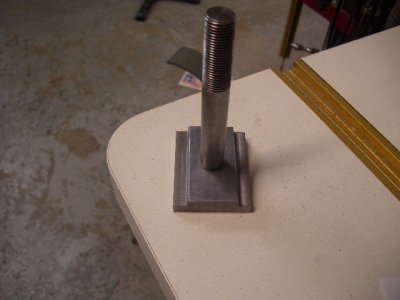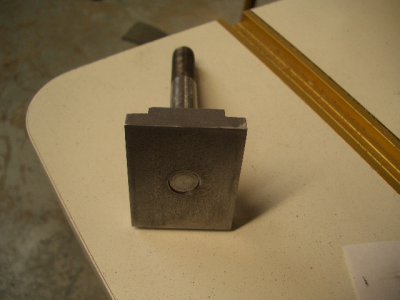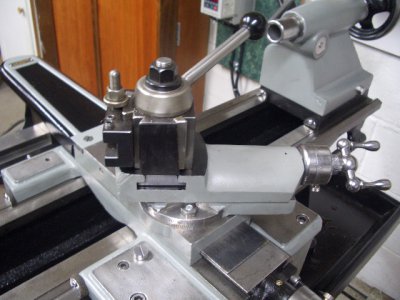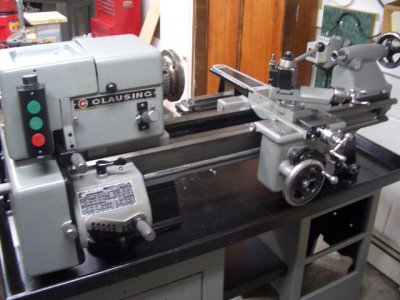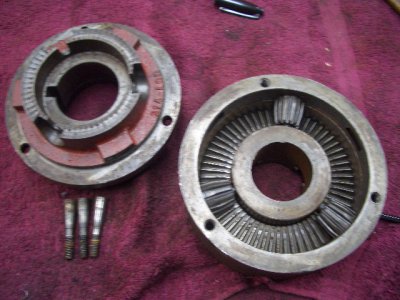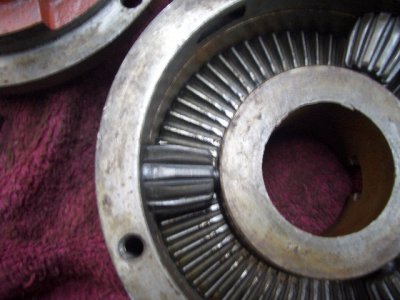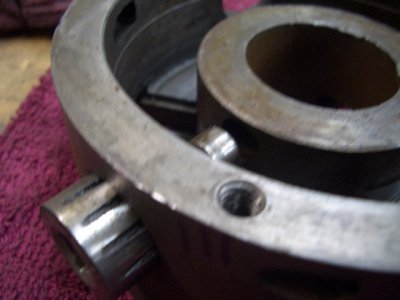This morning I took some steps to address the potential sources of the "squeal". First thing was to get some shaft retainer on the inboard bearing of the input shaft and get the cover back on that with the retainers. I decided between the retainers and the large gear on the outputside that the shaft should be pretty stable.
Next thing was to drop the apron and face off a 1/16" from the lead screw - that was enough to keep it off the bearing inner race of the lead screw output shaft. Cover back on that as well and lead screw re-pinned.
I also found that on the outboard side of the lead screw shaft that I had put retaining rings where the parts drawing didn't call for any. The retainers just barely fit over the nut on that end of the shaft. The nut turns with the shaft so there may have been some shifting of the retainers and interference with the nut. I decided if Clausing didn't think there were retainers needed then I wouldn't put any there. Cover back on that shaft as well.
So hopefully thise steps will resolve the squeal - I'm going to wait a while before I try i to give the shaft retainer a chnace to cure. In the mean time - I had noticed that the reversing gear set screw were vibrating loose so as long as it was apart I pulled the reversing gear bracket and put some loctite on those screws. The reversing gear bracket is mounted in the same hole as the outboard back gear eccentric and when Ipulled the bracket I found
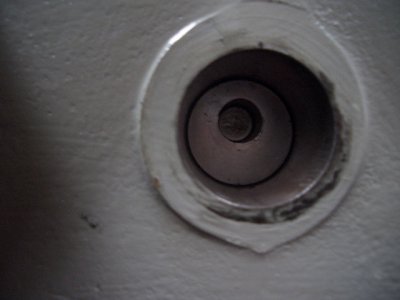
You can see that bushing has a through hole and gives an access point to the back gear shaft for oiling. Pretty cumbersome to get to that but at least it is a solution. I did order the oiler and plug for the inboard bushing and will modify it to accept the oiler at some point.
Rick
Next thing was to drop the apron and face off a 1/16" from the lead screw - that was enough to keep it off the bearing inner race of the lead screw output shaft. Cover back on that as well and lead screw re-pinned.
I also found that on the outboard side of the lead screw shaft that I had put retaining rings where the parts drawing didn't call for any. The retainers just barely fit over the nut on that end of the shaft. The nut turns with the shaft so there may have been some shifting of the retainers and interference with the nut. I decided if Clausing didn't think there were retainers needed then I wouldn't put any there. Cover back on that shaft as well.
So hopefully thise steps will resolve the squeal - I'm going to wait a while before I try i to give the shaft retainer a chnace to cure. In the mean time - I had noticed that the reversing gear set screw were vibrating loose so as long as it was apart I pulled the reversing gear bracket and put some loctite on those screws. The reversing gear bracket is mounted in the same hole as the outboard back gear eccentric and when Ipulled the bracket I found

You can see that bushing has a through hole and gives an access point to the back gear shaft for oiling. Pretty cumbersome to get to that but at least it is a solution. I did order the oiler and plug for the inboard bushing and will modify it to accept the oiler at some point.
Rick


